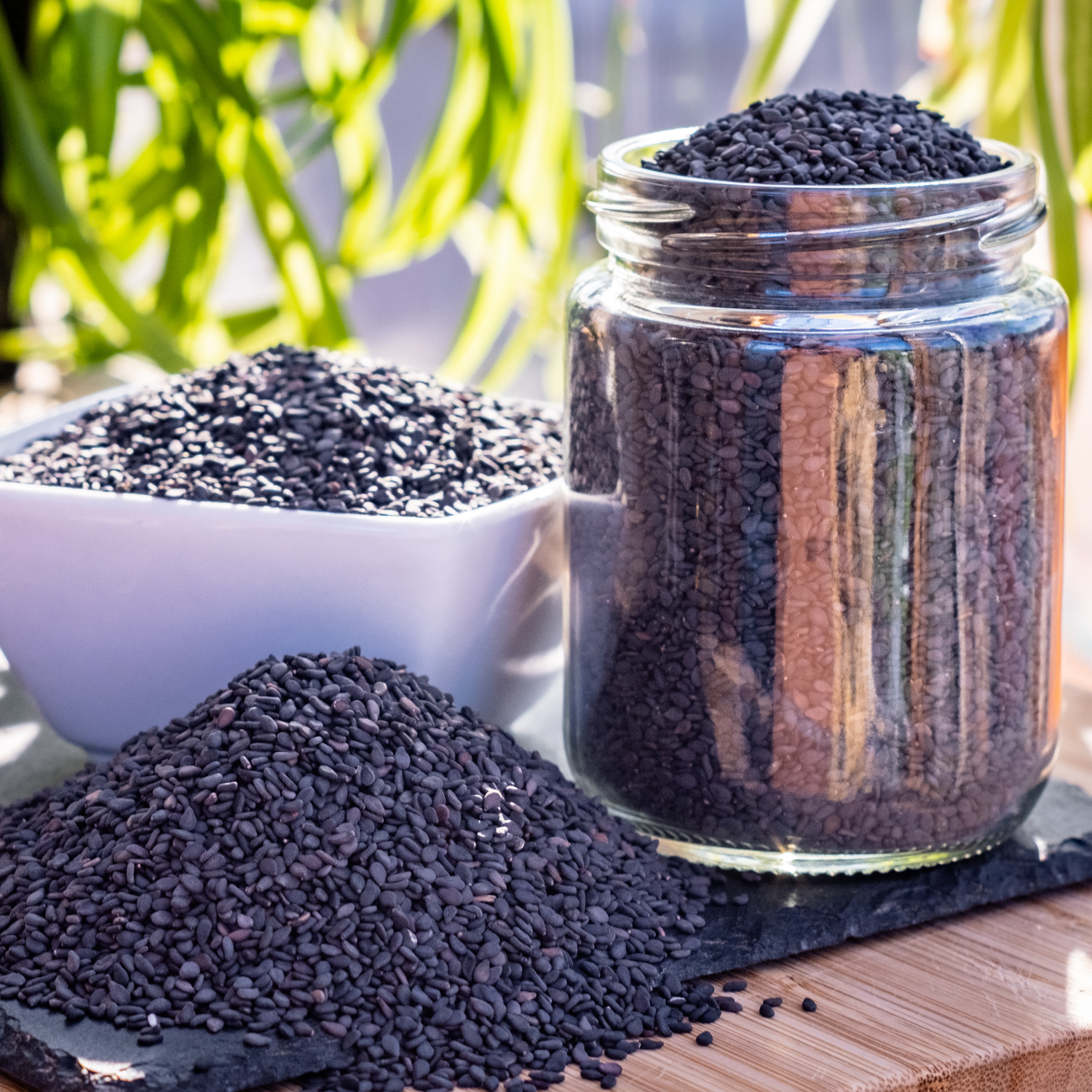
Basil
Share

Basil’s Latin name, basileus, means “king,” so it’s no wonder the fragrant green plant is known as the King of Herbs. People have used basil for a variety of purposes for 4,000–5,000 years, and over time it has been associated with death, love, religion, and virginity.
Modern North Americans tend to associate basil with Italian cooking, but basil is actually native to the tropical regions of central Africa, India, and Southeast Asia. In India, a variety of the plant known as “holy basil” or “tulsi,” is sacred in Hinduism. Tulasi, or Tulsi, the wife of the Hindu god Vishnu, was said to have taken the form of basil when she came to earth. Tulsi (the basil, not the god’s wife) was planted around Hindu temples, and placed with the dead to protect them in the afterlife. In fact, the herb was considered sacred enough that the British in India offered swearing on basil as an alternative to swearing on the bible when taking an oath. To this day, tulsi is used in Ayurveda, traditional Indian herbal medicine.
The spice trade brought basil through the Middle East to the Mediterranean, where the herb had a variety of uses and associations in the ancient Egyptian, Greek, and Roman empires. In Egypt, basil was used as an embalming ingredient, and is found in tombs and with mummies.
Though considered a love charm in ancient Greece, basil was also associated with death and considered a symbol of mourning. According to Greek mythology, the herb appeared when the warrior Ocimus fell in combat with another gladiator. The Greeks called basil basilikon phuton, meaning “kingly herb,” perhaps because it was used in royal medicine. However, the name basilikon may also be linked to the mythical basilisk. Basil was supposed to protect against the deadly stare and bite of the basilisk and was believed to be an antidote for snake bites.
Pliny, an ancient Roman scholar, described the then-common belief that basil must be cursed at when planted in order for it to grow (which must have led to some entertaining gardening practices). Pliny also refuted some negative beliefs about the herb, such as that it caused madness, and listed its benefits. According to Pliny, basil relieved fatigue, inflammation, and headache, and acted as an aphrodisiac. Basil is also mentioned in the only known cookbook from ancient Greece or Rome, in a recipe for fresh or dried peas seasoned with herbs and wine.
Basil also has a place in some Christian traditions. Christians who follow the Eastern Orthodox Church believe that Saint Helena (the mother of the first Christian Roman emperor, Constantine, who is also worshipped as a saint) discovered fragments of the cross on which Jesus was crucified buried underneath a basil plant. Supposedly, the basil grew where Jesus’s blood fell. To this day, Basil is a popular boy’s name among Eastern Orthodox Christians.
Beliefs about basil in the medieval world were no less strange than those of ancient times. Some African legends claimed that basil could protect against scorpion stings, and medieval Europeans believed that scorpions could actually be created from basil. Supposedly, basil sprigs placed under a flowerpot would turn into scorpions. In the 16th century, a French doctor took this link between basil and scorpions a step further, determining that smelling basil would cause scorpions to develop in the brain. A completely unrelated belief about basil was that the herb would wither in the hands of an “impure” woman.
Basil arrived in Britain sometime in the 16th century, and from there travelled to North America.
Basil is a member of the mint family and is related to rosemary and lavender. There are several varieties of basil, and different cultures have specific favourites. Over the centuries, basil has been supposed to help alleviate a huge variety of ailments, including cancer, convulsion, deafness, diarrhea, epilepsy, gout, hiccups, impotency, insanity, nausea, sore throat, toothache, and whooping cough. There are also reports that basil can be used in insect repellant. The types of basil most commonly used in North America are varieties of “sweet basil.” This is the basil that was grown in ancient Greek and Roman gardens and is also the type used in the Italian dishes with which western cultures tend to associate basil.
Though essential oil of basil has antioxidant, antiviral, and antimicrobial properties, today both dried and fresh basil are usually used in food. However, basil plants need hot sun, so while they grow in France, Egypt, Hungary, Indonesia, Morocco, Arizona, California, and New Mexico, the chilly, cloudy weather on British Columbia’s “wet coast” makes dried basil a simpler—and more economical—alternative. Basil is a key ingredient in tomato-based pasta sauces, and is also used in stews, on poultry, and on grilled or roasted vegetables. When making a cooked dish, substituting dried for fresh basil is easy. Flavour is more concentrated in dried herbs, so if a recipe calls for fresh basil, simply use one third of that amount of dried basil. Dried basil should be added early in the cooking process, so that the flavour can combine with the other ingredients, whereas fresh basil should be added near the end, because lengthy cooking ruins the herb.
Try our pesto recipe using our popular Dried Basil!
Sourced by Natasha Simpson

